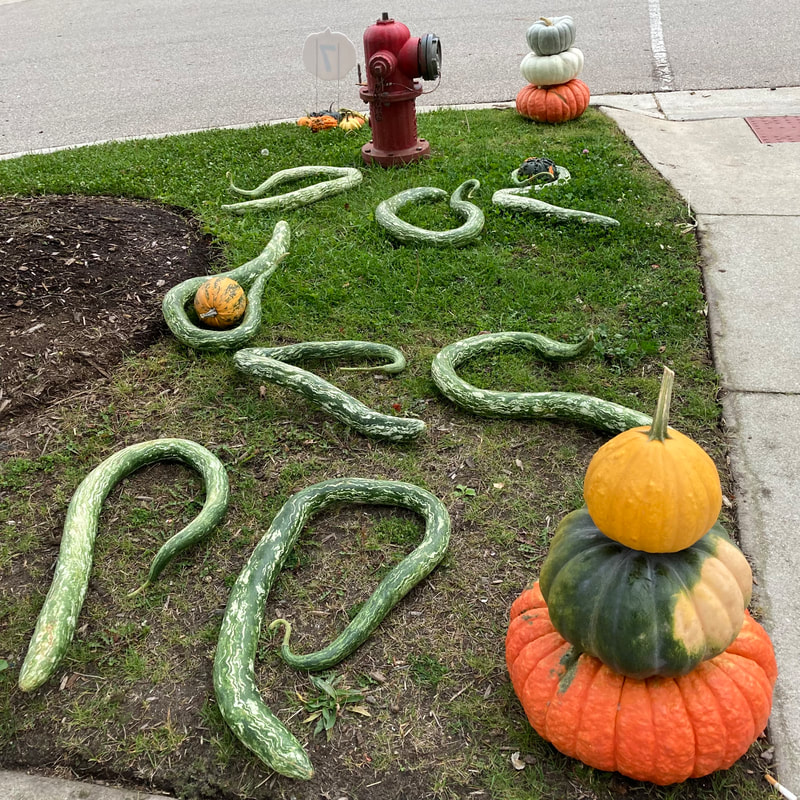|
Photo and article by Donna Iverson
The farmers market vendors were dressed like witches and goblins. Ghostly sheets hung from nearby trees. Even the squash were doing their part. Ominously appearing to slither along the ground were the snake gourds. Scientifically known as Trichosanthes cucumerina, snake gourds are native to tropical regions in Asia. They grow wild in India, China, Nepal, Indonesia and Australia. But with the warm summer this year, at least one Michigan farmer was able to grow them locally. Technically a fruit and not a vegetable, there are two kinds of snake gourds…the edible and the ornamental kind. Those pictured here are edible and immature. Cucumbers and the squashes are close relatives. The snake gourds need warm nights to produce fruit on vines that grow to six feet and need a trellis for best results. In their immature state, they taste like cucumbers and are eaten raw. Mature snake gourds develop a red pulp and are used as a substitute for tomatoes in African dishes. They can also be cooked like zucchini. Especially popular in India, the snake gourd is used both in cooking and in medicine. Medicinally, the snake gourd is a staple of Ayurvedic medicine. It is used to treat stomach, liver and skin maladies. Ayurvedic practitioners claim it detoxifies the kidneys, prevents constipation, loosens phlegm and soothes depression, anxiety and acid reflux. Its seeds are recommended for hypertension, diarrhea and fever. If the ornamental variety is allowed to harden, it can be fashioned into an Australian didgeridoo. And of course, they make great Halloween decorations that will scare any goblins passing by.
0 Comments
Your comment will be posted after it is approved.
Leave a Reply. |
Archives
April 2024
Categories |

 RSS Feed
RSS Feed